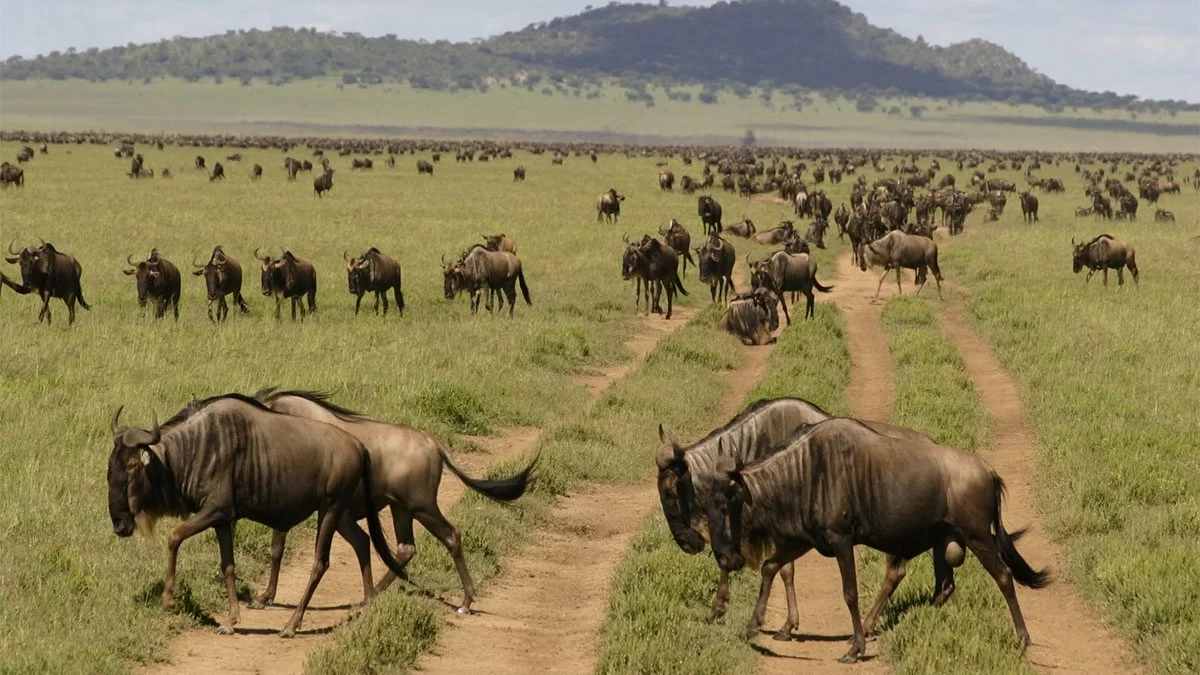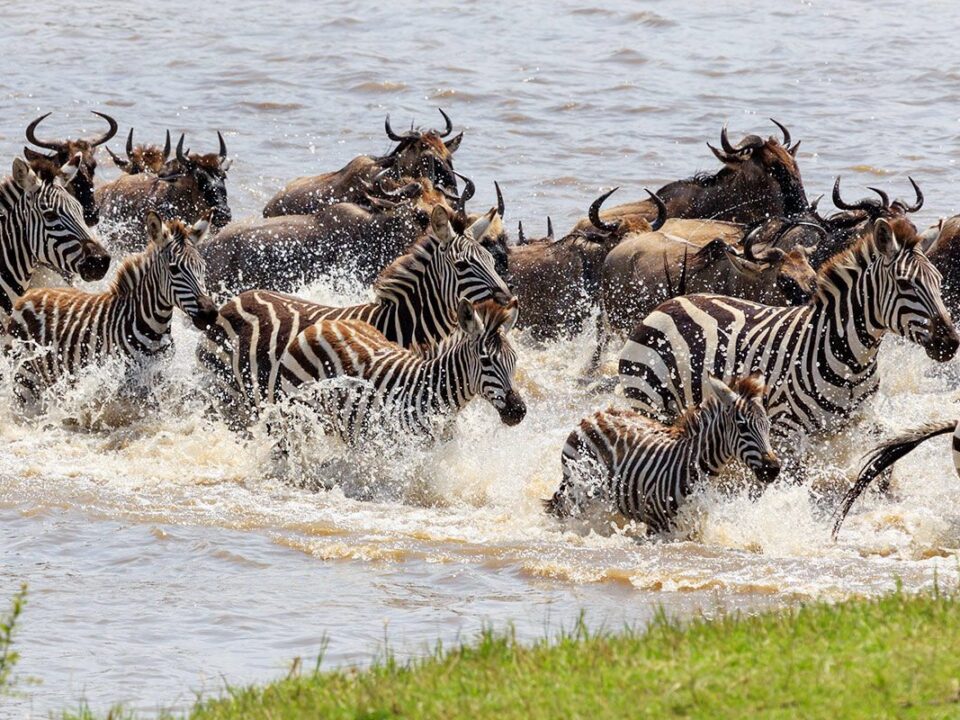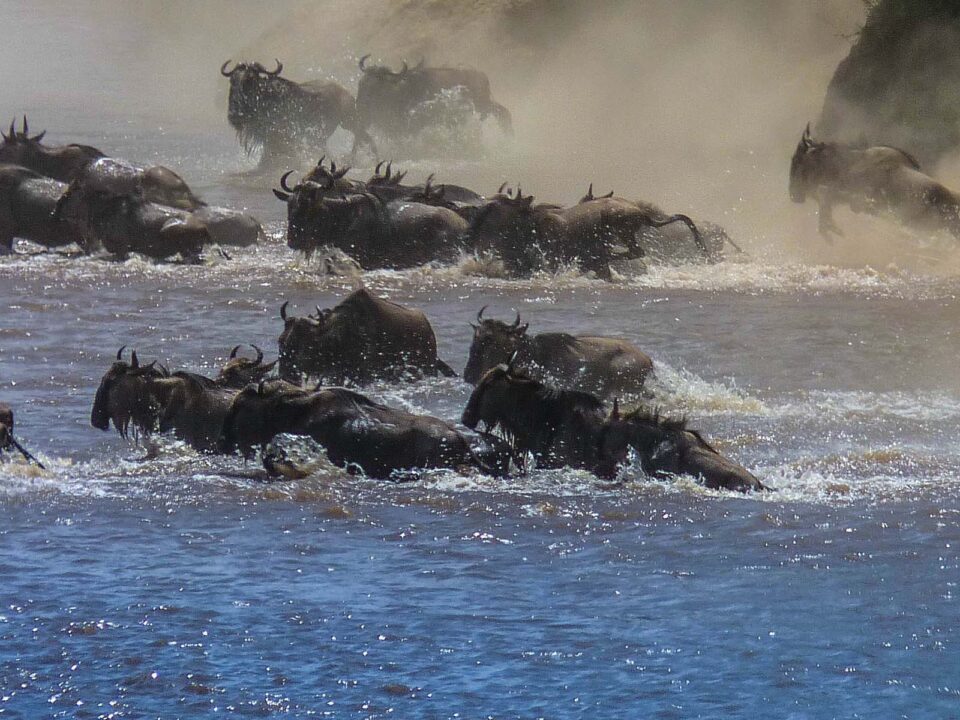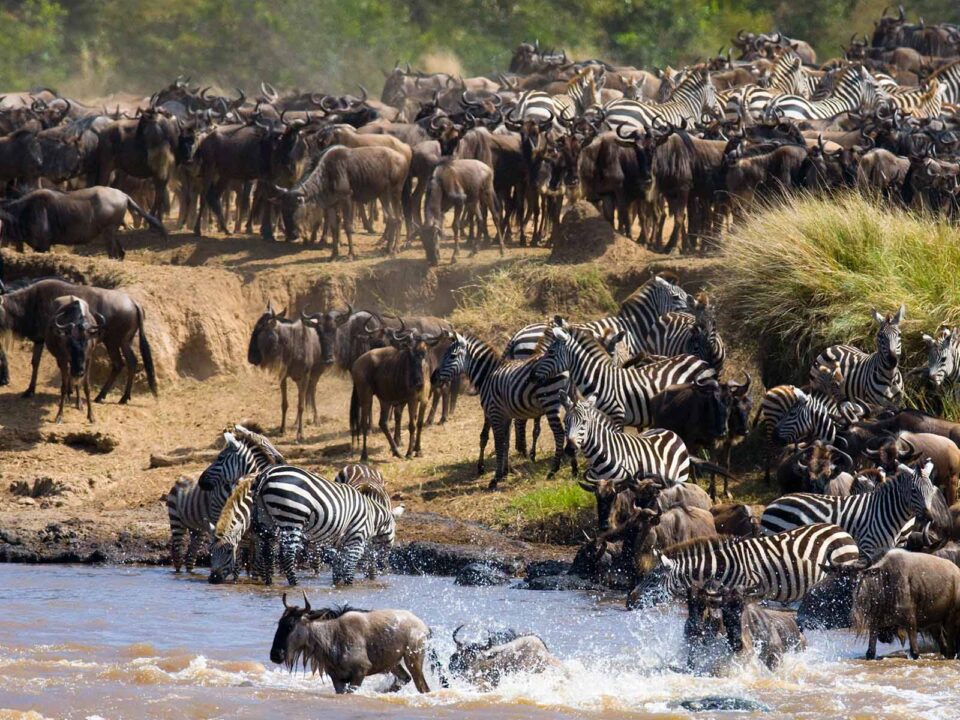Safari in June Wildebeest Migration Pattern

Nile Perch Fishing Rods & Equipment
December 13, 2023
How Long Does a Gorilla live?
December 13, 2023Safari in June Wildebeest Migration Pattern
Embarking on a safari in June unveils the awe-inspiring spectacle of the wildebeest migration in the Serengeti. During this period, the massive herds head towards the central and western Serengeti, gearing up for the challenging Mara River crossing—an endeavor fraught with peril as enormous crocodiles lie in wait. The weather in June offers cooler temperatures and lower humidity, resulting in fewer bugs. However, the landscape is veiled in dust, prompting the need to prepare camera equipment accordingly.
This juncture marks the peak of the rut, with the final segment of the mega herd arriving from the southern plains. The convergence of the rut and the orchestrated movement of the herds, coupled with relentless predator attacks, creates a spectacle that makes June a remarkable time to witness the buildup to the epic wildebeest migration.
Overview of Serengeti National Park
Serengeti National Park, a realm of breathtaking scenery and majestic wildlife, boasts the largest lion population in Africa. Renowned for the annual migration of over a million wildebeest and thousands of zebras, the park spans around 5,600 square miles, encompassing vast grassland plains, savannah, woodlands, and riverine forests. Sharing borders with the Masai Mara National Reserve and forming the broader Serengeti ecosystem with smaller reserves and conservation areas, it stands as an iconic African safari destination.
Game in the Serengeti displays both permanent residence in certain areas and migratory patterns. Thoughtful planning is essential to navigate busier regions and optimize the safari experience. To facilitate planning, the Serengeti is divided into three key areas—the Central ‘belt,’ including the Western Corridor and Eastern region, and the Southern and Northern sections.
June Safari Highlights
June, signaling the conclusion of the rainy season, transforms the plains into lush, green landscapes. The wildebeest herds embark on extensive journeys, with driving times between leading and trailing herds exceeding three hours. While June traditionally marks the Grumeti River crossing, the spectacle depends on the water level. However, it rarely matches the dramatic crossings witnessed at the Mara River in July and August.
Where to Stay in June
Navigating the dispersion of herds in June requires strategic planning. Balancing time on both sides of the Nyamuma and Simiti Hills proves advantageous. This approach provides a comprehensive experience, allowing for immersion in the migration on one day and capturing the approaching migration at the Mbalageti River the next. Depending on rainfall, the tail end of the migration may linger around Lake Magadi and the southern side of the Nyamuma and Simiti Hills.
Optimal accommodation options for early June include Makoma Hill and Mbalageti, with a transition towards the Grumeti River in late June and early July. A suggested split of five nights in each area ensures a well-rounded and captivating Serengeti migration safari in June. For an unforgettable experience, contact Trek Africa Expeditions to plan your safari with precision and expertise.




